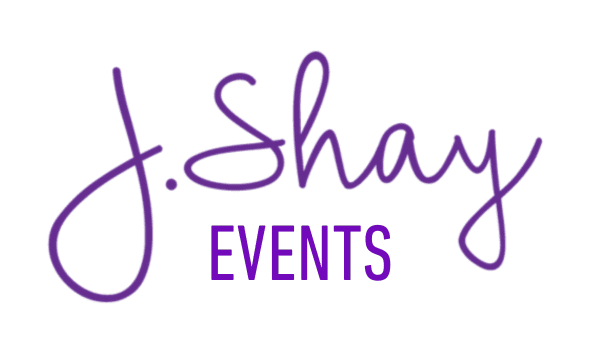Live events have become a marketing mainstay for many organizations. In fact, according to the Event Marketing 2019: Benchmarks and Trends Report, events are the single most effective channel for reaching business goals.
Having said that, ask any in-house event planner what it takes to create a feasible event schedule and they will most likely scowl as they talk about moving pieces and having a million and two things on their plate! In order for these pros to stay organized and help their company reach its goals, they’ve got to be able to create feasible event schedules for the year ahead.
Benefits of Creating an Event Schedule
Admittedly, it takes a lot of effort to create an event schedule, but the benefits far outweigh the effort.
Less Headaches
When you plan your yearly events ahead of time, you wind up with more streamlined processes and a less overall hectic experience on the operations and logistics side of things. And who doesn’t hate less headaches?
Cost Effective
Planning your yearly events far ahead of time allows planners to lock down venues and hotels, thereby avoiding high prices (and less desirable locations). It also helps you to pay deposits on time and keep solid track of all contracts. Often these details get lost in the chaos!
Keeps Everyone Happy
When you plan your entire year out, it allows key stakeholders to approve and tweak decisions, still giving you plenty of time to make adjustments. This keeps your partners, sponsors and investors happy throughout the entire process.
Things to Consider When Creating Your Event Schedule
Creating a yearly event schedule is truly an artform that requires a lot of planning! Here are some things to keep in mind when creating yours:
Tap Your Sales Team
How many trade shows and conferences do your sales staff want to attend? Usually sales people will put in requests to attend certain regional shows they know can benefit the organization. Don’t guess which shows they want to attend, ask them upfront.
What Does the Competition Look Like?
When planning the events that your organization will be hosting, it’s important that you know exactly how many big national conferences or trade shows are already on the calendar. You don’t want to schedule your event at the same time and compete for attendees.
Budget Considerations
You most likely have a set budget for “events.” How do you know how much of the entire budget should be allocated to each event planned? Follow these three steps:
- Establish Your Goals
What is the goal of each event? Not all of your event goals will be equal, and therefore some will call for more of your budget than others. No doubt if you will be hosting an event in the coming year, a big chunk of your overall budget will go toward this event, as opposed to the one where you’ll have a booth at one of the regional trade shows.
- Leverage Historical Data
Look back at past years to see which events made the biggest impact on your bottom line. If you’re like most organizations, you’ll probably find that 80% of your profits came from 20% of the events you hosted or attended. What lessons can be learned here? How better can you allocate your budget this year to increase profits even more?
- Keep Detailed Budgeting Notes
Just as you are able to glean important budgeting insights by looking back at past track records, your future you, or other event planners that come on board, will appreciate being able to look through your records for budgeting clues. For this reason, it’s important that you keep detailed notes in your budgeting plan.
For instance, if you will be purchasing event swag for attendees, be as detailed as you can with each item. Are you ordering T-shirts? If so, specify how many of each size you order and the cost per each shirt. Add any other notes in your description section such as order and printing time or other design specifications.
The more details you include, the better you and others will be able to look back and make better budgeting decisions.
Don’t Forget About the Smaller Events
When planning out your yearly event schedule, it’s easy to forget those smaller events that also offer benefits. Think about any meetings your C-level execs may need to take part in. Yes, these are smaller, but there are usually a TON that go on each year. Also, what about leadership retreats and incentive travel retreats? Don’t forget about those either!
Conclusion
As you can see, there is A LOT to juggle when creating an event schedule. On one hand, you want to maximize face time with prospects and customers to increase leads…But how much is too much? And then, which events are the right events and how much budget should be allocated for each? You also need a balanced schedule so not too much is going on at one time.
If you could use some help creating a feasible events schedule for the upcoming year, please click here to get in touch! We’ll take the stress out of the entire process.
You might also like…
The Power of Corporate Team Building Events
When people hear the phrase "team building," some might picture awkward icebreakers or trust falls...
20 Event Entertainment Ideas to Wow Your Guests
Want to make your next event unforgettable? Whether you’re planning a corporate party, trade show,...
How to Plan an Incentive Trip That Your Team Will Never Forget
An incentive trip is more than just a reward—it's a powerful tool for boosting team morale,...
7 Common Questions when Planning a President’s Club
Incentive programs are a great way to motivate employees and reward top performers. These...
How to Plan a Successful User Conference
User conferences are more than just industry gatherings. They're a powerful way to engage,...
Top Meeting Destinations of 2025
Planning a successful meeting starts with choosing the right destination. The right location can...







